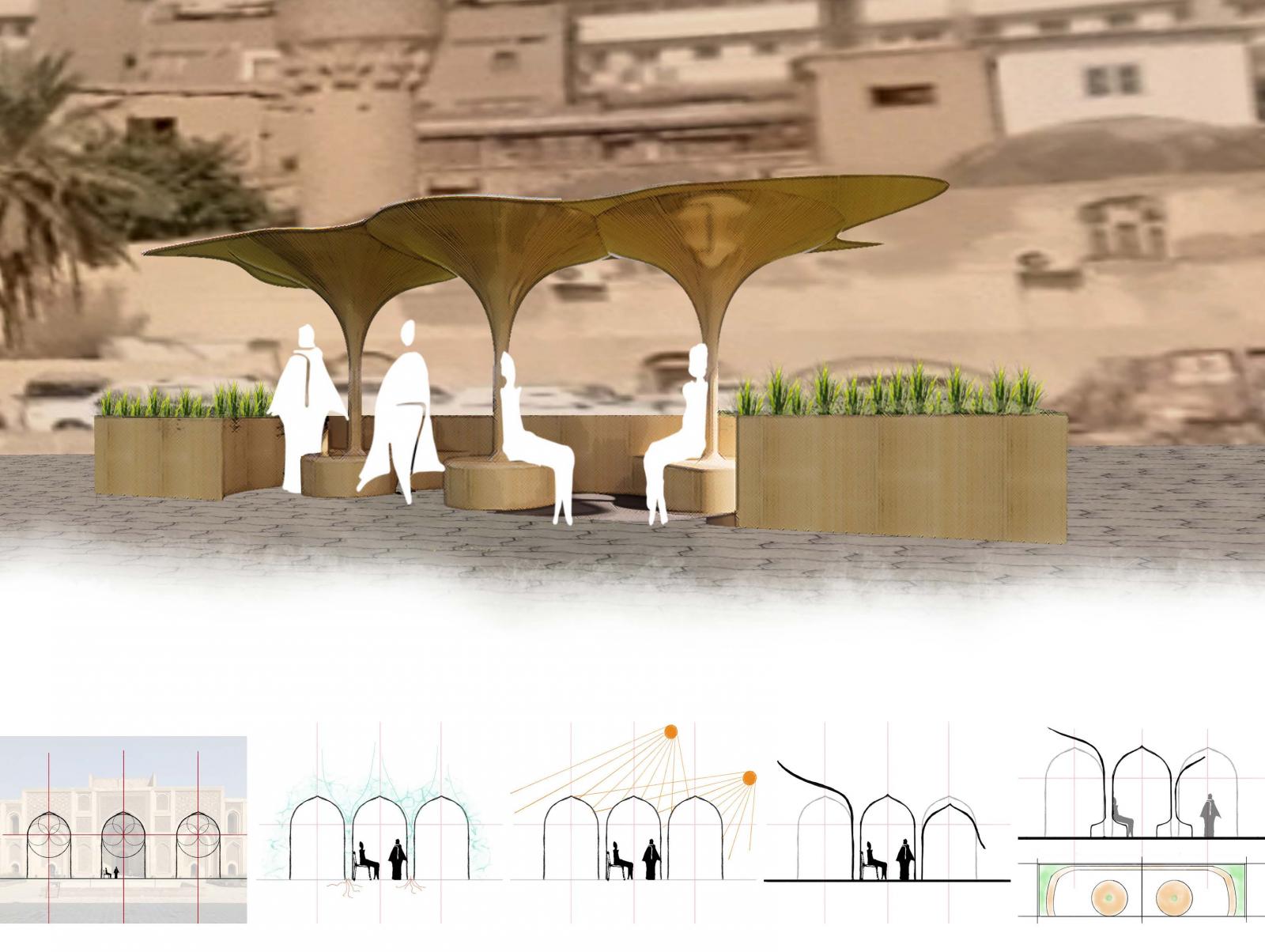In 1970, Joni Mitchell crooned wistfully about the dark side of urbanism in her song “Big Yellow Taxi.” This past month, Maria Farieta, a dual master’s student in architecture and urban planning, envisioned a course correct that Mitchell would celebrate: replacing a barren stretch of asphalt with a beautifully designed respite for people to sit and reclaim a bit of nature.
Farieta’s design took second place in the Parklet Design Competition, a contest sponsored by the American Institute of Architecture Students that challenged students across the U.S. to take back the streets and create meaningful places for people to gather.
The contest, which unfolded publicly over two months on Instagram, charged students to design a parklet, which carves out a curbside portion of a street—often just the size of a single parking space—and transforms it into an active, public space. Farieta’s submission leveraged tactical urbanism interventions she was already exploring in Baghdad, Iraq, as part of Professor Madlen Simon’s “Bridging the Gap” course, a cross-continental virtual studio with Al-Nahrain University in Iraq.
“The whole concept is about reclaiming the streets, often with these temporary, quick solutions to everyday problems,” said Farieta. “There is a long stretch of waterfront along the Tigris river in Baghdad that’s completely underutilized as a place and space that people can enjoy.”
Farieta’s concept creates a shaded seating area near a popular ferry stop in a city where outdoor spaces are in short supply. Riffing on the traditional vaulted arches found throughout the city, a funnel-like roof takes the shape of water lilies, jutting upwards from a curved and generous seating area. The seating area is flanked with planters overflowing with native reeds, a material often used in textiles and furniture; Farieta used the same material to form the structure for the parklet’s seating. With water a hot commodity in Iraq’s desert climate, the gently sloped roof is designed to collect rain water and distribute it back into the planters.
“Maria's parklet proposal is a great example of place-specific design, bringing locally harvested materials, traditional crafts and the riverfront location together to create a cooling respite from the extreme summer heat of Baghdad,” said Simon.
Since 2015, ARCH 603: Bridging the Gap has created opportunities for UMD architecture students to tackle real-world, diverse urban challenges through cross-collaboration with peers in Iraq. It leverages design to explore commonalities, counter misconceptions and strengthen cultural understandings, skills they will need in an increasingly globalized profession. The course won Architect Magazine’s Studio Prize in 2019.
See Farieta’s design, and other entries to the 2021 Parklet Design Competition, on Instagram.

